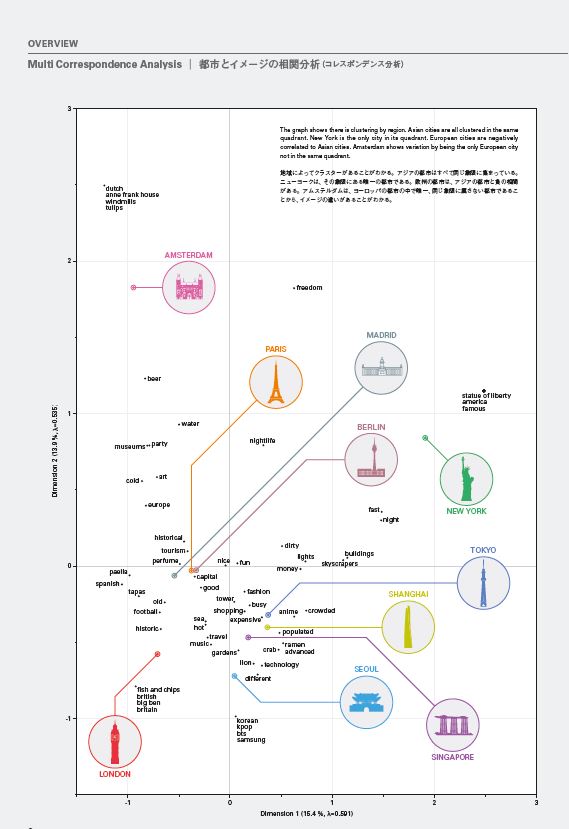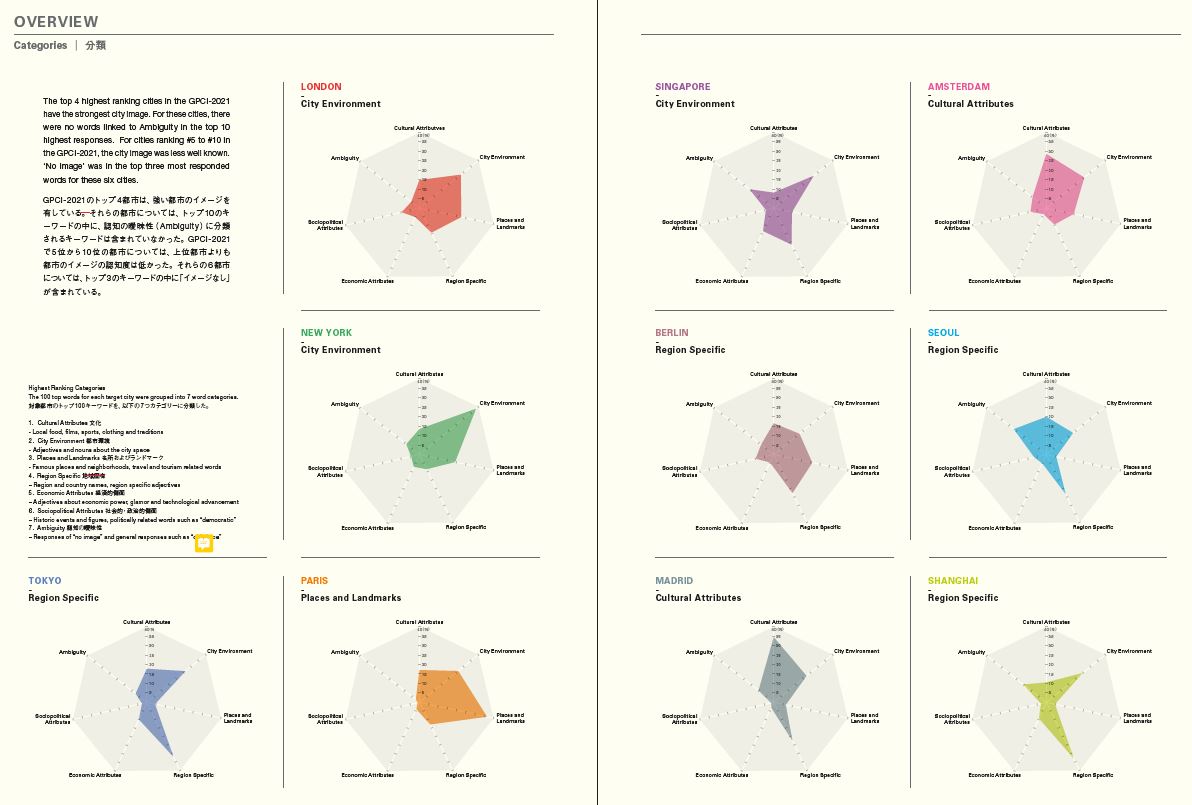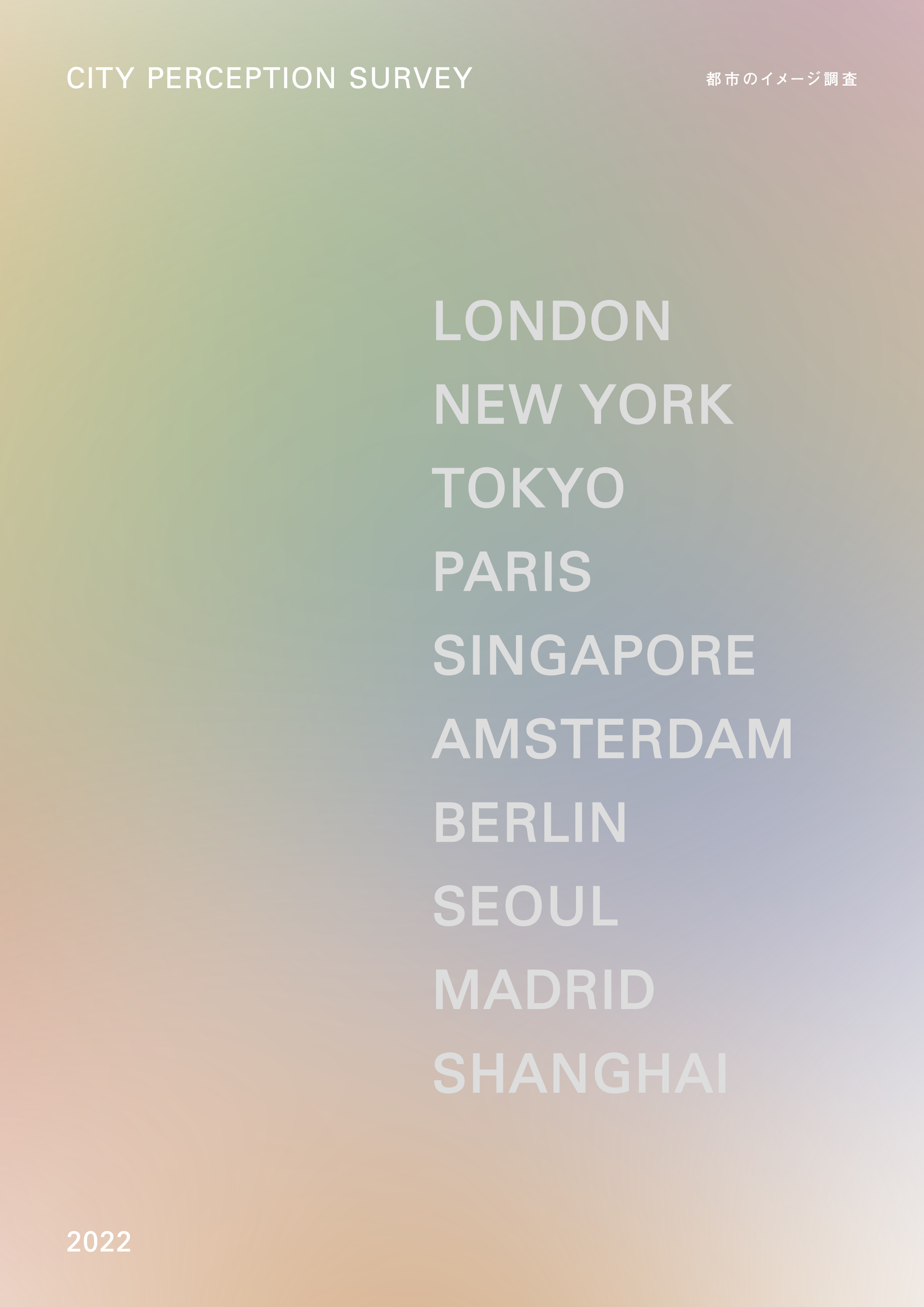CITY
City Perception Survey 2022
Globalization is changing cities at a staggering pace. At the same time, cities face enormous competition for people, goods, and capital. With this intense global competition, it is vital for cities to construct an effective “city image” to remain distinct and competitive, and thus attract resources. Through a survey and analysis of the perceptions of respondents in 48 global cities, this study aims to not only help understand the image of cities, but to also contribute to the future branding strategies of 10 target cities: London, New York, Tokyo, Paris, Singapore, Amsterdam, Berlin, Seoul, Madrid, and Shanghai.
Methodology
-
Word Cloud
Word Clouds were made using the top 100 ranking words for each city. The size of the word is in correlation to the frequency this word was mentioned.
-
Word Categories
The 100 top keywords for each target city were grouped into 7 categories.- 1. Culture
- 2. City Environment
- 3. Places and Landmarks
- 4. Region Specific
- 5. Economic Attributes
- 6. Sociopolitical Attributes
- 7. Ambiguity
-
Word Ranking
The top 10 responses from all respondents for each city were ranked by percentage of the total number of responses.
-
Residents and Non Residents Perception
The top 10 responses from residents were compared to the top 10 responses from non residents. Responses common to all cities such as “Capital”, “Big” and “Food” were discarded.
-
Visitors and Non Visitors Perception
The top 20 most frequent words for those that had visited the target city and those that had not visited the target city were ranked. Responses common to all cities such as “Capital” and “City” were discarded.
-
Regional Perception
Survey responses were categorized by the seven world regions as designated by the Japanese Ministry of Foreign Affairs. The three most common responses and the first instance of a unique word within the top 30 words from each region were recorded.
-

Overview: Multi Correspondence Analysis
-

Overview: Categories
-

Buy booklet





